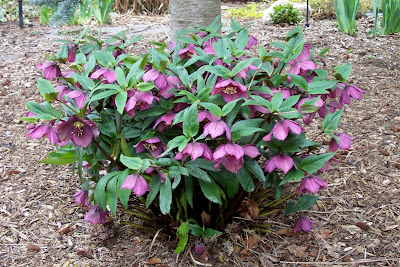
Many years ago I tried landscape fabric to keep weeds out of the garden. And it worked, somewhat.
It doesn’t mean I never had to pull a weed. I covered the fabric with mulch. Weed seeds love to settle in mulch and need to be pulled from time to time. Some weeds such as thistle or dandelion go through the fabric. I know someone who’s fabricked garden is completely covered with weeds.
Small weeds in fabricked landscape usually come out easily. If a weed gets large and you pull it out, it pulls the fabric with it and then you have to re-cover it with mulch. Sometimes a strong rain will wash away the mulch and expose the fabric. I hate to see black plastic soil.
The cost for landscape fabric can be anywhere from $13.95 for a 3’ X 50’ roll to $145.95 for 4’ X 250’ Professional Weed Barrier. I found the different types available today confusing.

I used some of the leftover fabric under rocks at the top of our small bank. I hear it may work well under a stone path. I really don’t know anyone who has rock mulch so I can’t comment on that.
.
The point is – using landscape fabric is not completely maintenance free.
See more information from efn.org
http://www.efn.org/~ipmpa/fabric.htmlBut, the most important reason I don’t use landscape fabric – it makes it impossible to add organic matter to the soil. Compost and mulch are basics in the garden. Over time, compost and mulch produce good soil. Good soil produces healthy plants.

If you have a weedy area that you want to cover and mulch, spread newspaper 6 sheets thick and spread mulch on top. It will kill the weeds and then degrade into the soil. My side garden was done that way.
Since you have to cover the fabric with mulch anyway, why not feed your plants at the same time. I don’t even want to think about planting a new shrub in a fabricked bed.
 hs and daffodils to allow the energy to go in to the bulb instead of making seeds.
hs and daffodils to allow the energy to go in to the bulb instead of making seeds.
 azalea
azalea

 dogwoods are full of flowers,
dogwoods are full of flowers,


















 Many years ago I tried landscape fabric to keep weeds out of the garden. And it worked, somewhat.
Many years ago I tried landscape fabric to keep weeds out of the garden. And it worked, somewhat.






